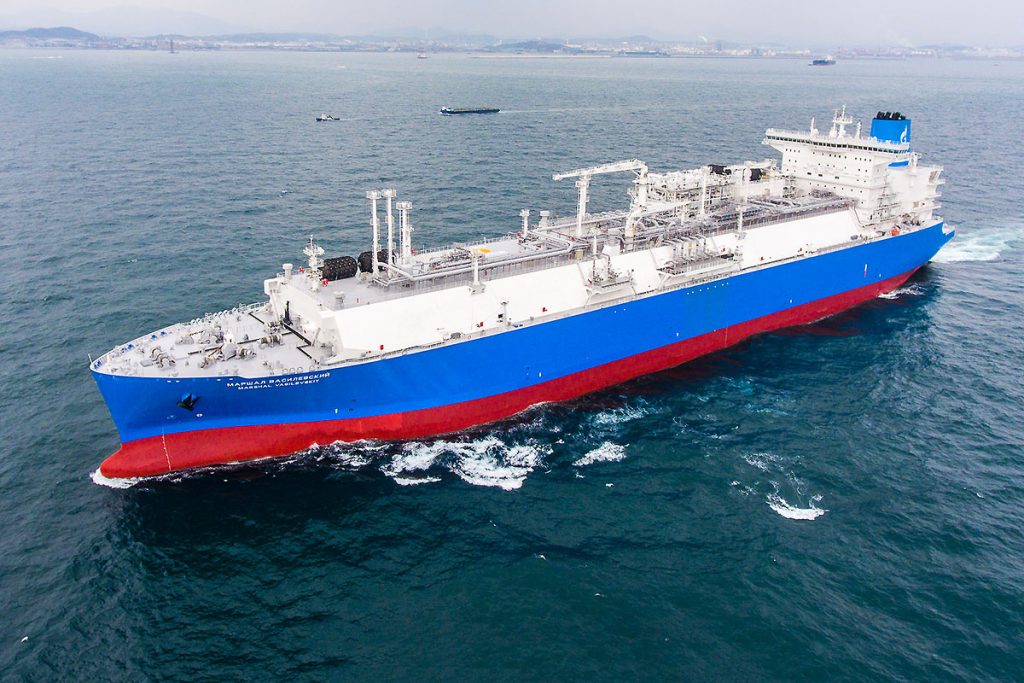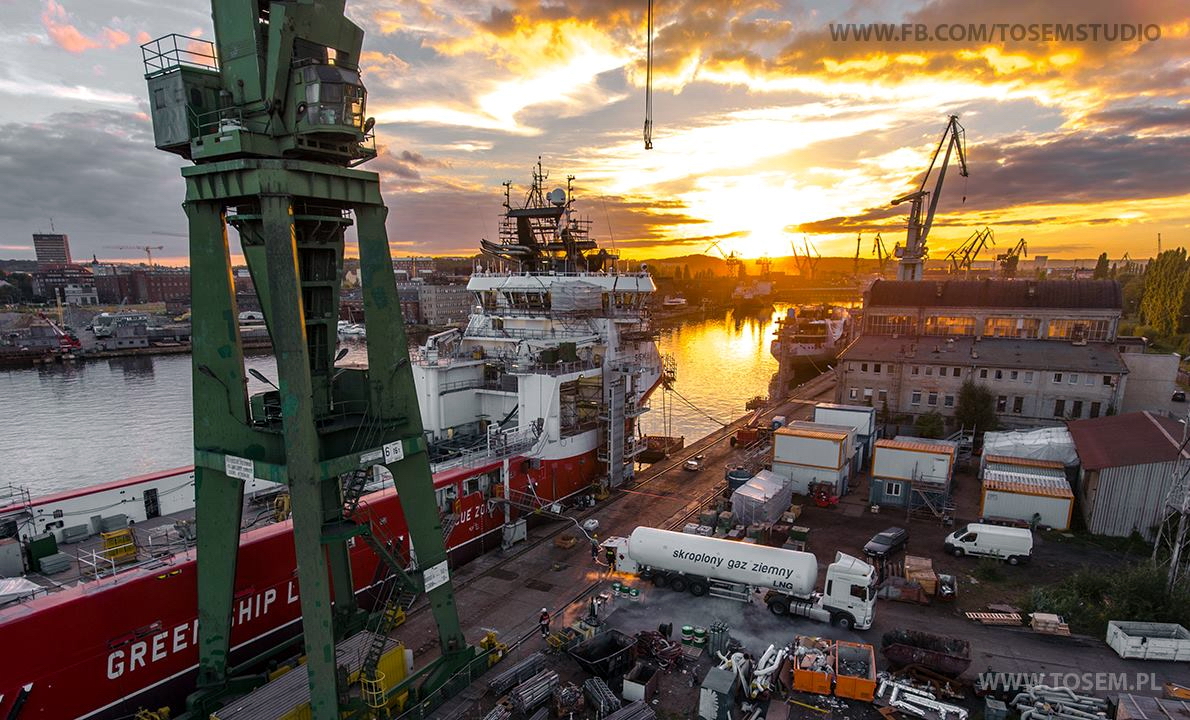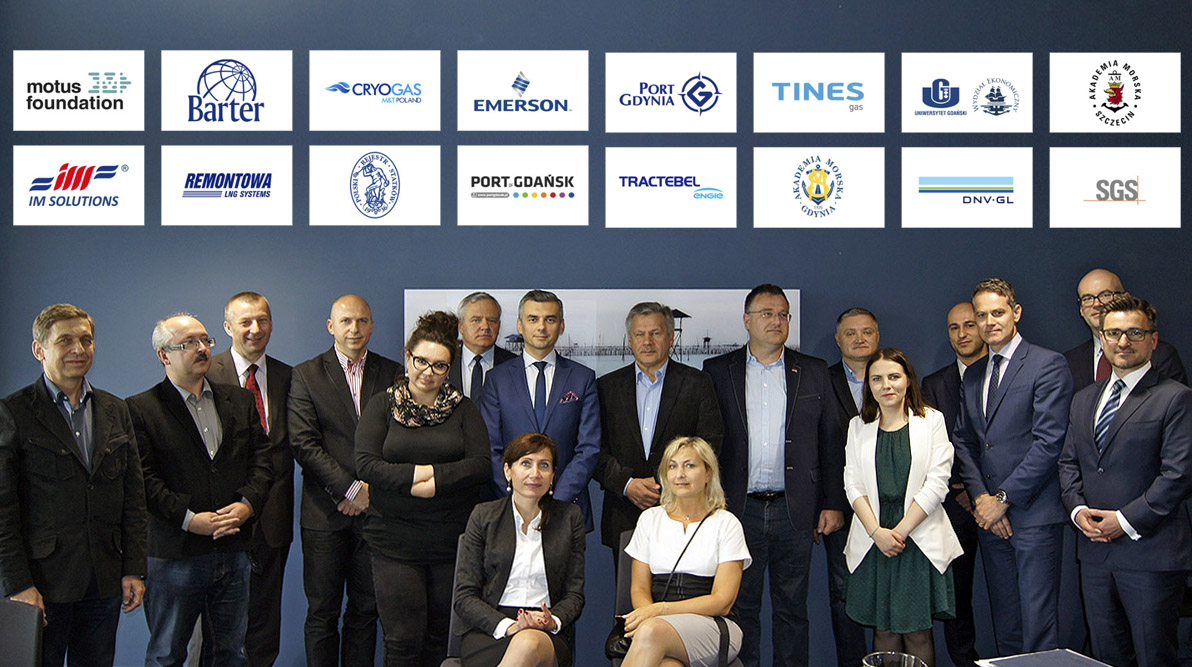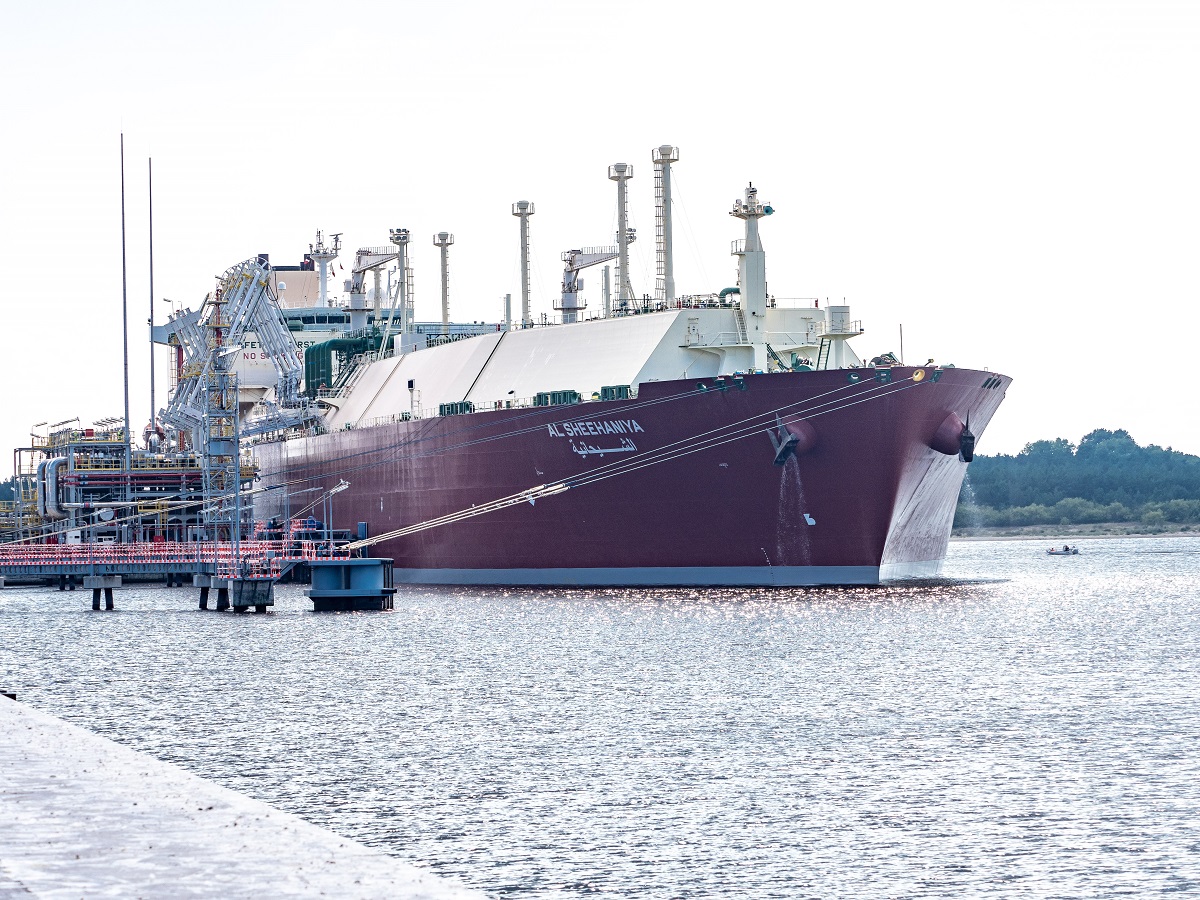Ship with gas for Kaliningrad circles in Gdansk Bay
The Russian gas carrier Marshal Vasilevskiy has arrived near Kaliningrad Oblast. The ship is circling the Gdansk Bay and the southern Baltic Sea, triggering much conjecture and comment in leading news agencies and media worldwide, including Reuters and the Financial Times.
According to Refinitiv Eikon, the ship loaded 163 800 cubic metres of liquefied natural gas in Zeebrugge on 20-22 January and arrived in the Gdansk Bay around midday on Tuesday 25 January. Since then, she has mainly been in the Gdansk Bay waters, and during bad weather, with strong winds, she has even sailed into the middle of the South Baltic and returned towards the Gdansk Bay. Sometimes the ship drifted but did not set anchor.
It is important that the vessel remains on standby (circling in and around the Gdansk Bay) but is not moored at its planned berth – the offshore LNG terminal, located north of Sambia. Marshal Vasilevskiy is a gas carrier equipped with a regasification facility. Therefore, she can serve as a floating, long-term or permanently anchored FSRU (Floating Storage and Regasification Unit) terminal.
The officially declared role of the FSRU Marshal Vasilevskiy was to secure the supply of natural gas to the Kaliningrad region and make the enclave independent from the gas pipeline running across Lithuania. The vessel was planned to deliver gas directly to the grid in the Kaliningrad Oblast.
The gas carrier’s current visit to the Baltic has been its first return to the Kaliningrad vicinity since 2019 when the ship was officially launched as a floating LNG terminal. Soon after the media inauguration attended by President Vladimir Putin, the ship quietly left its position off the northern shores of the Sambia peninsula and began operation as a regular transport gas carrier. She carried LNG for several companies between various markets from Singapore to the USA.
The Russian gas tanker is named after the commander who planned the Red Army’s counter-offensive during World War II that drove German troops back from besieged Moscow. The ship’s recent appearance in the Baltic Sea has led industry observers to speculate that it is part of Moscow’s contingency plans to invade Ukraine.
Analysts speculate that Moscow may thus be bolstering gas supply options to Kaliningrad if a Russian incursion into Ukraine disrupts pipeline gas supplies, either through Western sanctions or Russia’s decision to cut supplies to Europe.
– It’s something like the dream of conspiracy theory proponents that this tanker suddenly appeared off the coast of Kaliningrad. We cannot say with certainty why it is there, but its presence will fuel an atmosphere of concern about gas supplies in Europe as tensions over Ukraine rise, as it appears Russia may be creating contingencies for supply disruptions – analyst Tom Marzec-Manser of ICIS, an energy industry consultancy, told the Financial Times news service.
Some observers have even claimed that the appearance of the FSRU Marshal Vasilevskiy foreshadows Russia’s imminent launch of military operations in Ukraine.
– From Russia’s point of view, this is sensible and prudent contingency planning in case of gas supplies via Lithuania to Kaliningrad is disrupted in the coming weeks – points out Laurent Ruseckas of IHS Markit, in turn.
– From the Western side, this can be seen as a warning that Russia believes it can supply its entire territory (including the enclave) regardless of what happens to gas exports through the pipelines. However, it is not in the interest of either side that gas supplies are disrupted – he adds.
Perhaps the Russians are waiting to unload the ship in Kaliningrad, which would explain its circulation in the Gdansk Bay. Then, Marshal Vasilevskiy would be able to sell the batch of cargo in its tanks somewhere in Europe if there were no armed conflict in Ukraine or if it did not threaten overland gas supplies to the Kaliningrad Oblast.
Another Gazprom-controlled gas carrier, the Energy Integrity, briefly declared (in data emitted through the AIS system) “Kaliningrad” as its destination port en route after loading LNG in Cameroon. From Monday to Tuesday, 31 January/1 February, the vessel transited the English Channel, heading northeast. Its destination port may be located in the Baltic Sea.
source: PortalMorski.pl




